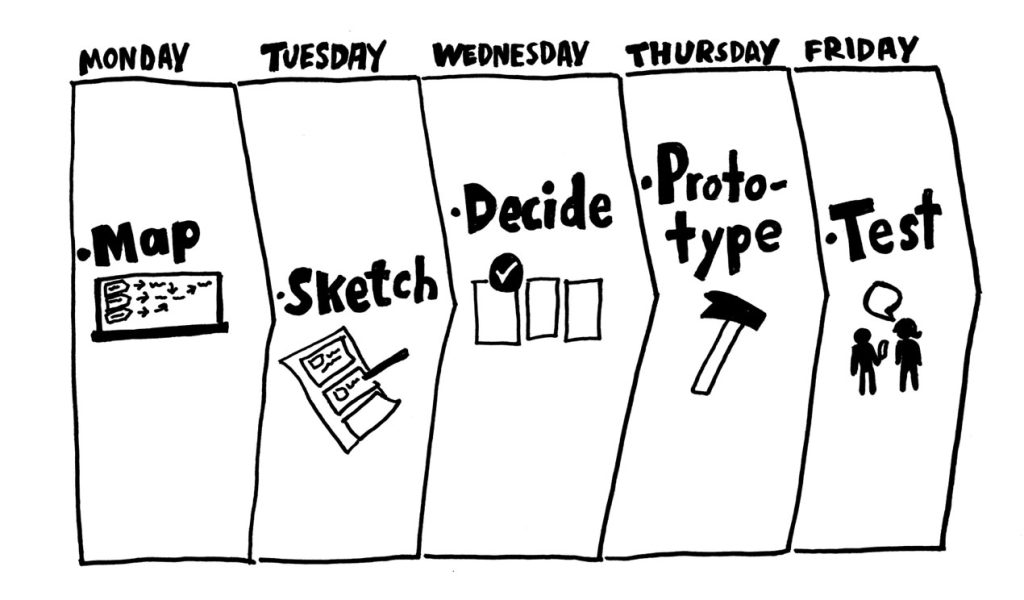

Staying competitive in today’s rapidly evolving economy demands constant reinvention of products, services, and business models. Traditional approaches to application development, while effective in the past, often stifle innovation when applied to digital product design and development. To thrive, organizations must embrace a fundamentally different approach that prioritizes vision, speed, and adaptability.
Large corporations possess the resources and scale needed to innovate, yet their ideas often falter under rigid processes and governance structures designed for traditional application development. Startups, on the other hand, excel at rapid ideation, prototyping, and learning from customer feedback. They accept failure as part of the process, iterate quickly, and pivot without becoming mired in methodology. These principles are essential for fostering innovation in larger organizations as well.
The fast pace of technological advancements and increasingly sophisticated customer expectations require more than just agile development. While Agile focuses on speed and iterative progress, it’s insufficient on its own to address the complexities of modern digital products. What’s needed is a holistic approach that integrates techniques like lean practices, design sprints, prototyping, atomic design, and rapid impact analysis to reduce innovation risks and accelerate meaningful outcomes.
The traditional, months-long process of brainstorming, creating specifications, publishing RFTs, and deliberating on designs is no longer viable. Consumers demand innovative solutions that meet their needs today—not years from now. The shift in digital product design must go beyond shorter development cycles. It requires rethinking the way we approach design to embrace uncertainty, test assumptions, and prioritize learning.
David Rose of MIT Media Lab highlights this new way of thinking in his book Enchanted Objects, where he introduces the idea of “glanceable technology.” These products deliver value intuitively and seamlessly, such as a smartwatch that vibrates to notify you when it’s time to leave for an appointment based on real-time traffic. This kind of design requires more than functionality—it demands insight into user behavior and preferences to create products that feel natural and indispensable.
In the rapidly evolving digital landscape, traditional Agile methodologies may no longer suffice to meet the demands for speed, innovation, and user-centric design.
Successful digital product design now requires an interdisciplinary approach that combines business analysis, user research, psychology, marketing, and software development. This fusion of skills allows teams to understand user needs better, validate ideas, and predict how products will evolve in the future.
Key techniques to support this evolution include:
1. Vision-Driven Product Development
Clear product vision ensures that teams stay aligned and focused on delivering meaningful value. This requires understanding not just immediate user needs but also anticipating future trends and challenges.
2. Design Sprints and Prototyping
Rapidly testing ideas through design sprints and prototypes allows teams to validate concepts early, gather honest user feedback, and minimize risks before full-scale development begins.
3. Lean UX
Integrating Lean principles with user experience design, Lean UX focuses on collaborative design, continuous learning, and minimizing waste, whether in resources, time, or effort to enhance user-centric product development. It emphasizes learning from small, incremental experiments rather than investing heavily in untested ideas.
4. Atomic Design
Building products using modular, reusable components streamlines the design and development process, improves consistency, and enables faster iteration.
5. Rapid Impact Analysis
Employing data-driven assessments to quickly evaluate the potential effects of changes or new features ensures that development efforts align with business objectives and user needs. It also ensures that teams can make informed decisions without delaying progress.
In a world where technology and consumer behavior change at breakneck speed, digital product design must prioritize adaptability and evolution. Teams need to anticipate how products will grow and adapt over time, ensuring they remain relevant and valuable in the face of changing demands.
This approach shifts the focus from simply “delivering features” to long-term value. It recognizes that success in digital transformation isn’t just about being faster—it’s about being smarter, more customer-centric, and prepared for what’s next.
By combining better product vision with modern methodologies like lean, design sprints, prototyping, atomic design, and rapid impact analysis, organizations can foster a culture of continuous innovation. It ensures they stay ahead of the competition and deliver products that resonate with today’s consumers.
"To keep on winning the game, you need to skate to where the puck is going to be, not where it has been".
Wayne Gretzky

A Design Sprint is a time-constrained, collaborative five-day process based on Design Thinking, Lean UX, Lean Business Model and Agile Development. Developed by Jake Knapp for Google Ventures, the process has been battle-tested by thousands of successful companies such as Google, Facebook, IBM, Lego, Netflix, Aviva, Slack and Irish Life.
Here is what the process looks like:
Design Sprints, when they are run correctly, can significantly reduce product development cycles and development costs, reduce the risk when bringing a new product or a product feature to the market, and deliver overall much better quality products.
They are a great alignment tool when there is little consensus on how to move forward and they vastly improve team integration and bonding.
Using Design Sprints, we can deliver in just a few days:
Curious to know more? Let’s talk